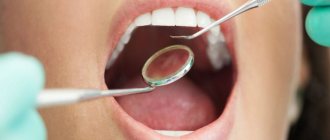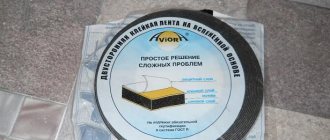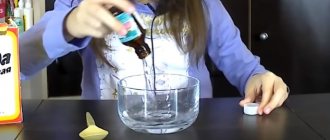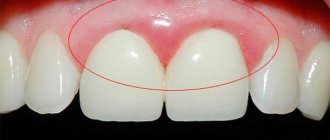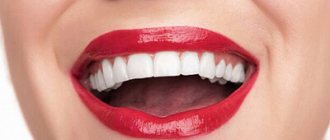There are these types of dentures:
- removable structures with fixation;
- clasp;
- partial or temporary;
- flexible;
- silver or titanium inlays;
- various types of crowns - zirconium oxide, cast metal, metal-ceramic;
- veneers;
- dental implants.
The final price depends on the type of prosthesis, materials, and complexity of the work. The wide range of possibilities in dentistry allows patients, in consultation with their attending physician, to choose effective solutions.
Why do crowns fall out?
This may be due to:
- Loss of cement elasticity, causing the crown to become uncemented.
- Damage to the prosthesis due to heavy loads when chewing or biting off hard food.
- By installing temporary cement that has not been removed.
- The beginning of the appearance of caries at the edges of the tooth.
- Frequent consumption of viscous foods - toffees, chewing sweets.
- Installing the product on a small tooth.
Whatever the reasons for the loss, this defect will not be attractive. And correctly selected glue will eliminate the disadvantage.
There are professional compounds for attaching single crowns and bridges. They securely fix crowns, but are sold only in specialized stores and are very expensive (from 5 thousand rubles and above). There are also simpler options that can be found at a regular pharmacy.
Here are a few of the most affordable ones:
- Polyacrylin from (Belgorod region) is a two-component dental adhesive for crowns based on finely dispersed special glass, polyacrylic and tartaric acid. Suitable for permanent fixation of metal and non-metal dental crowns, bridges, as well as for quick attachment of inlays and pins. Polyacrylin has high adhesion, an anti-caries effect, good biological compatibility, and ensures absolute reliability of fixation. The composition of the two-component adhesive includes powder 10 g + liquid 8 g. The powder is fluoride glass, the liquid hardener is polyacrylic acid. When the components are mixed, a plastic composition is formed, which hardens into durable cement. Packaging costs about 700-800 rubles.
- Cemion-F (VladMiva, Belgorod) is a set of three components for fixing crowns and other orthodontic structures. The kit includes: powder 20 g, liquid hardener 15 ml, conditioner 10 ml. The adhesive composition, obtained by mixing powder and hardener, has high adhesion to enamel, increased mechanical strength and low solubility. Provides reliable sealing of the adhesive joint, releases fluoride for a long time, which strengthens the hard tissues of the stump and prevents the development of secondary caries. This inexpensive compound can be used as a temporary adhesive for crowns. The cost of the set is 450-500 rubles.
- GLASSIN Fix (“Omega Dent”, Moscow) is a two-component dental dental adhesive (powder + solution system). The powder is the smallest particles of fluorosilicon glass, the liquid is a hardener based on an aqueous solution of polyacrylic acid. GLASSIN Fix has high adhesion to dental tissue and good biological compatibility. Due to the prolonged release of fluoride ions, an anti-caries effect is ensured. The set is sold in pharmacies and costs about 600 rubles.
Indications and contraindications
Before resorting to filling a damaged tooth, you should make sure that there is no reason to seek professional help from a dentist. So, you cannot install a filling at home if:
- it is not possible to relieve pain;
- carious lesions are highly developed, damage to the dental canal is observed;
- the formed cavity is small in size;
- pathologies of soft tissues: pulpitis, abscess, cyst.
When there is no pain and the caries damage is small, it is permissible to use the method of filling a tooth at home. It is impossible not to feel the obvious advantages of this approach:
- significant financial and cost savings. A self-installed filling will cost much less than going to the dentist;
- protection against infection. When performing treatment at home, you can be sure that the instruments used are sterile. It is not possible to check the processing of instruments used by the dentist;
- saving a tooth. Often, dentists resort to drastic measures, but self-treatment will help protect the masticatory organ;
- exclusion of stress. A visit to the dentist makes some people panic, some even lose consciousness just after seeing the drill.
We suggest you familiarize yourself with Where is the facial nerve on the face?
Home filling is an alternative for such cases. Remember that only a specialist can correctly assess the condition of a tooth, so if you have any doubts, it is better to contact him.
Methods of fixing removable dentures
With the fixation of dentures that can be removed, the situation is more complicated. Particular difficulties can arise with the attachment of partial and complete acrylic or nylon dentures.
Fixation of full-type removable dentures (when teeth are missing) occurs due to the suction effect that occurs in the oral cavity.
Clasp-type dentures are attached using attachments (locks) or clasps (metal hooks).
In order to securely fasten such structures in the mouth, a whole range of measures are used: the partial denture is attached using metal or acrylic hooks, resting on the remaining teeth; the alveolar processes serve as an additional place of fixation. When you put on a removable denture, a suction effect occurs, which also contributes to good fixation.
If your oral cavity remained motionless, then the measures listed would be quite sufficient. However, when you eat food, when you chew, or sneeze, yawn, if you have active facial expressions, then as a result of this, the hooks are displaced, air gets under the prosthesis, which in the future can lead to its displacement or even falling out.
Do-it-yourself filling from a ready-made pharmaceutical preparation
The optimal and reliable way to place a filling is the technique developed and proposed by Dr. Tsivinsky. In order to make a filling, you will need to purchase a special drug, Acrodent, which is produced by a Belarusian manufacturer. This material allows you to easily fill teeth at home.
We invite you to familiarize yourself with Methods of dental restoration: how to make dentures at home
The box should contain three tubes with a powdery substance and two with an oxidizing agent. To make a filling material, the powder is mixed with a liquid reagent to a dough-like state. The first few minutes the composition has a plastic form and is ready for use.
After five minutes, the composition will completely polymerize, so before mixing it, you need to prepare the tooth in advance.
The drug Acrylicoxide is an analogue of Acrodent
The system is very simple. The instructions are opened and the filling material is prepared in accordance with it. All components are included, so there should be no difficulties. The main thing is to make sure that the substance that comes out after mixing all the ingredients is homogeneous without lumps and resembles a thick toothpaste.
Before filling a carious cavity, you should thoroughly brush your teeth and cover the area of damaged enamel well with the material.
After this, the work site is covered with a thick layer of Vaseline so that the filling has time to harden and adhere to the tooth without interacting with saliva and foreign infection.
At this stage, the procedure can be considered complete. The main thing is to give the tooth time (about 30 minutes) to distribute the filling along the canal.
It is recommended to place the filling at home before going to bed so that the material has time to work and relieve pain. In the morning, the temporary filling must be removed.
The procedure can be repeated many times until the pain goes away, but in advanced cases this method will not bring positive results, but will only delay a trip to the dentist for some time.
If the pain has subsided, a permanent filling can be placed with the same material.
The developer assures that if all the rules and mixing technology are followed, the homemade filling can last for several years.
Carbondent can also be used at home
In what cases can a fallen crown be put back?
Re-fixation of a permanent crown is possible if the following conditions are simultaneously present:
- if the supporting tooth is intact, has no chips or cracks,
- there is no need to treat/grind the tooth,
- if the prosthesis is not damaged or only slightly damaged: a small chip of ceramic on the metal “cap” can be restored.
It is also possible to reinstall a fallen temporary plastic or composite prosthesis. But all of the above conditions must also be met.
“A month and a half ago, I began to notice that the dental crown was moving out or seemed to be tilting. There was still no time to get to the doctor, and somehow I didn’t attach much importance. And while celebrating my sister’s birthday, I felt like I was chewing something wrong in my mouth. It turned out that the crown fell off while eating! I put it on a napkin and in my pocket. And the next day I went to the dentist. He examined everything, took an x-ray and said that we can glue it back and walk like this for a year or two.”
Alexander, review from the site irecommend.ru
How to make toothpaste at home
Making your own toothpaste is quite simple; for this you will need sterile containers and the necessary ingredients. The easiest way to make toothpaste from tooth powder is to take tooth powder with a natural composition and add glycerin and water to it in equal proportions. You will get a softer product without foam and with all the beneficial properties of tooth powder.
If you want to completely make your own toothpaste, then we offer you the best recipes.
Causes of tooth crown loss
Before looking for ways to glue a temporary prosthesis, let’s figure out why it fell out. There may be several reasons for this:
- hard and sticky foods (chewing candies, nuts);
- the end of the service life of the cement on which the crown was previously glued;
- habit of chewing hard objects (pens, pencils);
- formation of deposits on the edges of the crown;
- low teeth that do not allow the crown to attach well. (Specialists eliminate this drawback by using special resins in their work).
Precautionary measures
Unfortunately, the manufacturers of these products cannot guarantee a successful result. After all, the lion's share of success lies in correct dental diagnosis. By filling an insufficiently cleaned tooth, you create a place in its middle for various infections that multiply very quickly. An inflamed nerve cannot be saved in this way either. Therefore, it is best to monitor your dental health and have regular dental examinations. Then there will be no neglected problems and exorbitant expenses.
Feeling discomfort from the prosthesis
It is also possible to feel discomfort in the mouth after installing a denture:
- Problems with pronunciation.
- Increased salivation.
- A feeling of something foreign in the mouth.
- Rubbing of the gums and the inside of the cheek.
Usually these phenomena go away after 10–15 days, but if the discomfort persists for a long time, you should go to a specialist for a more precise fit of the prosthetic structure and eliminate problems with dental prosthetics.
Pros and cons of the procedure
The decision to treat at home is made after carefully studying all the pros and cons.
The advantages of installing a filling yourself are:
- The money savings are noticeable. Buying a filling kit will cost several hundred rubles.
- You can save time, you don’t have to stand in queues or travel by transport to another area.
- In many cases, it is possible to save a tooth when doctors insist on removing it.
- When treating at home, there is no risk of contracting infections (such a danger exists when performing manipulations in a clinic).
- There is no nervousness and stress associated with a visit to the dentist. There is no need to drill your teeth with a drill.
The negative side of filling teeth at home is the fragility of the installed fillings. Still, this is a temporary measure. And even if the result of treatment lasts for several years, then you will have to go to the clinic.
Important! There is a risk of developing inflammatory processes under fillings if the carious process continues to develop or the cavity is not sufficiently disinfected.
